
Lisa Grossman
Astronomy Writer, Science News
Lisa Grossman is the astronomy writer for Science News. Previously she was a news editor at New Scientist, where she ran the physical sciences section of the magazine for three years. Before that, she spent three years at New Scientist as a reporter, covering space, physics and astronomy. She has a degree in astronomy from Cornell University and a graduate certificate in science writing from the University of California, Santa Cruz. Lisa was a finalist for the AGU David Perlman Award for Excellence in Science Journalism, and received the Institute of Physics/Science and Technology Facilities Council physics writing award and the AAS Solar Physics Division Popular Writing Award. She interned at Science News in 2009-2010.

All Stories by Lisa Grossman
-
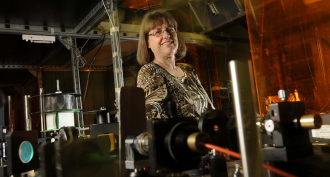 Physics
PhysicsDazzling laser advances bring physicists a Nobel Prize
The winners of 2018 Nobel Prize in physics helped usher in new laser feats, such as making optical “tweezers” and creating amazingly bright beams of light.
-
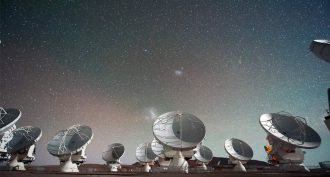 Physics
PhysicsDistant galaxy seems filled with dark matter
If the Cosmic Seagull is a repository for dark matter, it will be the most distant galaxy to be filled with mysterious stuff.
-
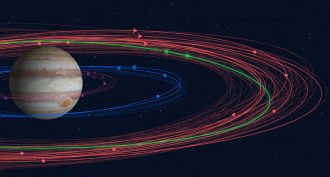 Planets
PlanetsJupiter has 12 more moons than we knew about — and one is a weirdo
Astronomers found a dozen previously unknown moons of Jupiter. One may be a remnant of a larger moon that was all but ground to dust.
-
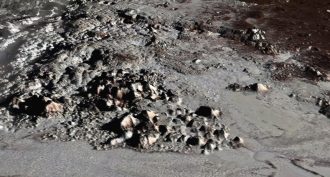 Planets
PlanetsNew Horizons data reveal first global maps of Pluto and Charon
Astronomers have made new charts of Pluto and its moon Charon. They show high peaks, deep depressions and strange ridges.
-
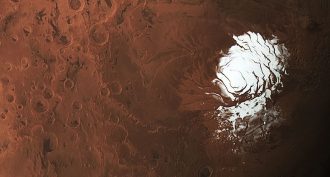 Planets
PlanetsFinding living Martians just got a bit more believable
What might a real Martian look like? Scientists have a better idea after identifying a buried liquid lake on the Red Planet.
-
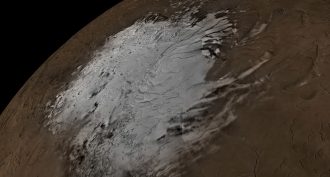 Planets
PlanetsMars appears to have a lake of liquid water
A 15-year-old Mars orbiter has spotted signs of a salty lake beneath the Red Planet’s southern polar ice sheets.
-
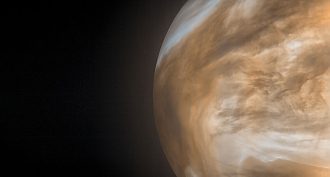 Planets
PlanetsThick atmosphere boosts how fast Venus spins
The thick atmosphere on Venus can change by a few minutes every day how long it takes the planet to rotate.
-
 Planets
PlanetsPluto’s heart has dunes of methane ice
Pluto’s heart-shaped plains are striped with sand dunes. The sand is made of methane ice.
-
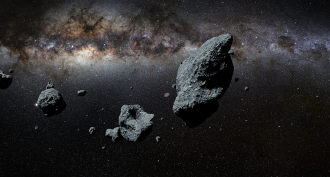 Chemistry
ChemistryDiamonds and more suggest unusual origins for asteroids
Inside a meteorite, scientists found sulfur and iron wrapped in tiny diamonds. Those gems hint the rock formed inside a long-lost planet.
-
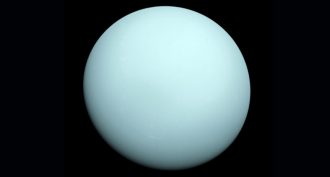
-
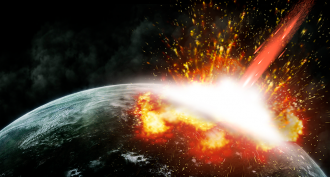 Planets
PlanetsAsteroids may have delivered water to early Earth
Scientists shot mineral pellets at a simulated planet. It showed an impact wouldn’t have boiled off all of an asteroid’s water.
-
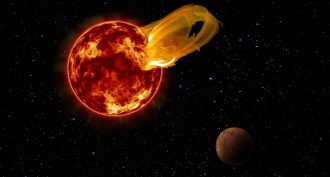 Planets
PlanetsFlared! How a planetary ‘neighbor’ may have been fried
Hoping for life on the planet our stellar neighbor Proxima Centauri? Don’t hold your breath. Its star may have sterilized its Earthlike exoplanet.